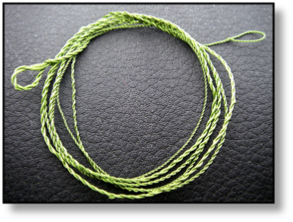EACH PAGE HERE IS AN EXTRACT FROM THE EBOOK.
To Read More
To Read More
Just $18.49
Just $18.49


Fly Fishing Encyclopedia



Fly Fishing Encyclopedia



Fly Fishing Encyclopedia



Fly Fishing Encyclopedia



Fly Fishing Encyclopedia

There is one other important reason why leaders come in a pre-assembled form. The art of fly fishing has developed to the point where you will frequently use more than one fly. In fact, it is usual to use three flies spaced down your leader. This naturally gives you a greater chance of hooking a fish - but there's a lot more to it than that. This three fly set up is often referred to as a "team of three" and this gives us some clue as to what's going on. Some flies are designed to be very visible and attract the fish's attention. Not surprisingly, these are called attractor flies and they are placed nearest to the fly line so they will be the first fly seen by the fish as the fly line is retrieved. Now that we have the fish’s attention we present it a little further down the leader with a fly that it is more likely to believe is its dinner, followed by another that might do the trick. So the flies are complementing each other and really are working as a team.
As we discovered in the chapter on fly lines, in order to work properly, the line has to have a certain amount of weight and mass. For it to have that weight and mass it has to be thick. Therefore it will not be inconspicuous in the water. We need to put some distance between the fly line and the fish if we are not going to spook them. To achieve this, a length of normal fishing line - known as monofilament - is attached to the fly line and our fly is finally attached to the other end of that thin fishing line. This length of fishing line is called the leader. For dry fly aficionados I will mention that the next section is aimed at sub-surface fishing. Your special needs are described towards the end of this chapter.
As you can see from the picture, the furled leader looks like a braid, but the important point to note is that one end is much thicker than the other as witnessed by the relative sizes of the two loops. It is this progressive reduction in thickness that gives us the turnover effect that we seek in dry fly fishing. While these leaders are normally shop purchased, it is possible to make them yourself and by examining the manufacturing process we can see just how they work. But first take a quick look at this video which will show you what a furled leader looks like in detail and demonstrates its declared advantage over monofilament.
LEADERS

